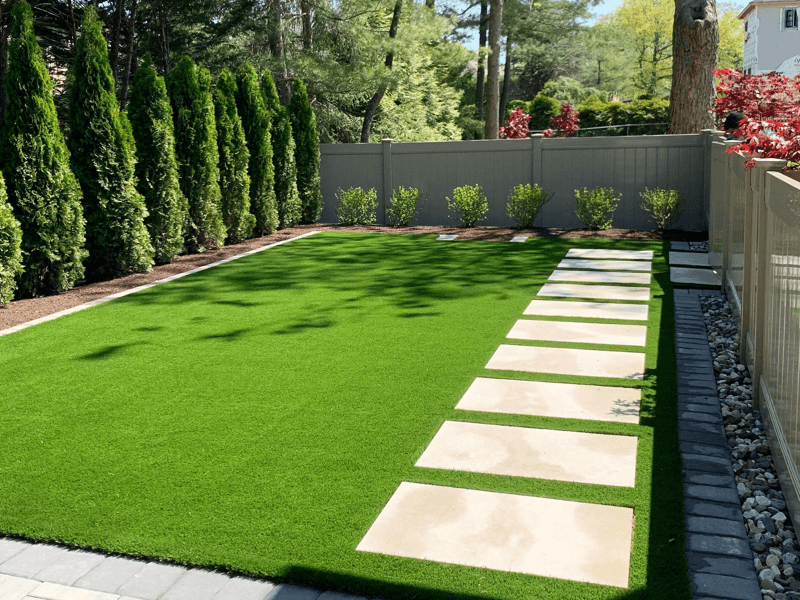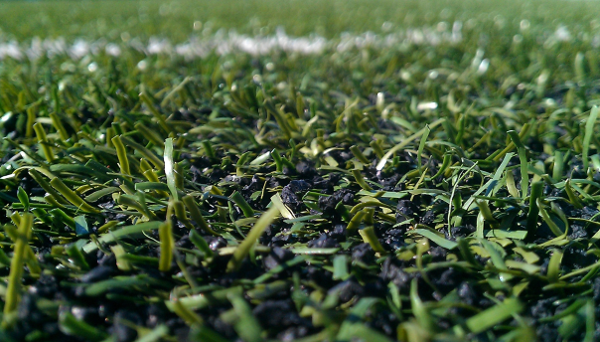Experience a Flawless Lawn with Arizona Artificial Turf for Any Outdoor Space
Experience a Flawless Lawn with Arizona Artificial Turf for Any Outdoor Space
Blog Article
Explore the Environmental Perks of Opting for Artificial Grass Solutions
The adoption of artificial grass solutions offers a compelling chance to resolve pressing environmental difficulties. By dramatically minimizing water use and minimizing the application of dangerous chemicals, these options not just promote sustainable landscape design but also secure regional ecosystems. In addition, the reduced carbon impact connected with decreased maintenance activities adds to a much more lasting strategy to land monitoring. However, the effects of these benefits prolong beyond mere conservation efforts, questioning about their lasting influence on habitat conservation and overall ecological balance. Discovering these measurements reveals a complex interaction worth taking into consideration.
Water Preservation Benefits
Among one of the most significant benefits of synthetic grass is its ability to save water. Standard lawn yards require significant watering, particularly in areas prone to dry spell or water constraints. In comparison, artificial turf does not need watering, dramatically decreasing the overall need for water sources. This attribute is particularly valuable in dry regions where water scarcity is a pushing worry.
By getting rid of the demand for normal watering, man-made grass contributes to sustainable landscape methods and helps minimize the environmental effect of extreme water usage. The conservation of water extends to the reduction of overflow, which can lead to soil erosion and waterway contamination.
In addition, the installation of artificial grass allows municipalities and homeowners to allocate water sources a lot more efficiently, focusing on important uses such as drinking water and farming. The shift in the direction of synthetic turf not just promotes responsible water use yet additionally lines up with wider environmental goals aimed at protecting natural resources.
As communities progressively prioritize sustainability, the water conservation advantages of synthetic grass present a compelling instance for its adoption in business and residential landscaping jobs.
Minimized Chemical Use
The shift to synthetic lawn significantly lowers the reliance on chemical therapies typically made use of in all-natural grass upkeep. Traditional lawn monitoring usually involves the application of plant foods, pesticides, and herbicides to advertise development and control parasites. These chemicals can pose dangers to human health and wellness, regional wildlife, and the atmosphere, contributing to dirt and water contamination.
In comparison, synthetic turf eliminates the demand for these unsafe materials. By lessening the release of synthetic substances into the ecological community, fabricated grass advertises much healthier soil and water systems.
Furthermore, the absence of chemical runoff connected with fabricated lawn setups helps protect neighborhood waterways from pollution, sustaining aquatic life and maintaining biodiversity. Artificial turf companies phoenix. As neighborhoods significantly focus on lasting methods, selecting artificial grass provides a sensible remedy that straightens with ecological preservation goals. With this change, home owners can take pleasure in lavish environment-friendly areas without compromising eco-friendly health, paving the means for a more lasting future
Reduced Carbon Footprint

In addition, the setup of synthetic lawn can lead to substantial water preservation. Natural grass require substantial amounts of water for watering, which not just includes to the carbon impact associated with water extraction and treatment yet additionally strains regional water sources. In contrast, synthetic grass needs marginal maintenance, needing no watering, consequently dramatically lowering water usage and its linked energy prices.
In addition, the longevity of synthetic grass adds to its decreased carbon influence. With a lifespan of as much as 15 years or more, the demand for constant replacements is lessened, causing less waste and lower power usage in manufacturing and dealing with conventional grass alternatives. Overall, synthetic lawn provides a lasting choice for eco conscious landscaping.
Environment Preservation
Environment conservation is a crucial factor to consider in the debate over landscaping choices, especially when contrasting man-made turf to all-natural grass. Natural turf yards frequently require extensive upkeep, consisting of the use of chemicals, fertilizers, and herbicides, which can detrimentally impact neighborhood communities. These chemicals can seep into the dirt and waterways, harming native vegetation and fauna and interfering with local environments.
Artificial grass removes the demand for hazardous chemicals, therefore safeguarding close-by wildlife and preserving the integrity of surrounding ecosystems. The installation of artificial turf can lead to the conversion of previous turf areas right into even more biodiverse landscapes, such as pollinator yards or indigenous plant locations, which can sustain regional wildlife.
Ultimately, the transition to synthetic grass not only conserves water and decreases maintenance efforts but additionally cultivates an extra unified connection between human activities go to this site and the all-natural atmosphere, advertising habitat conservation at the same time.
Long-Term Sustainability
Long-term sustainability is a vital factor in assessing the advantages of synthetic lawn over conventional grass yards. One of the most considerable advantages of artificial turf is its resilience; it can last approximately 15-20 years with very little maintenance, whereas all-natural yard needs frequent reseeding and substitute. This durability reduces the requirement for constant sources, such as water, fertilizers, and pesticides, which are important for preserving a healthy and balanced turf lawn.
Additionally, man-made turf adds to a reduction in carbon discharges related to lawn treatment tools. Conventional grass typically call for gas-powered mowers, trimmers, and blowers, every one of which add to air pollution. Turf installation phoenix az. On the other hand, synthetic grass gets rid of the need for such devices, promoting a cleaner atmosphere
Additionally, the production of fabricated turf increasingly uses recycled products, enhancing its sustainability profile. As manufacturers embrace eco-friendly methods, the ecological impact of fabricated turf continues to decrease.

Verdict
The fostering of artificial grass options provides substantial you can look here ecological benefits, consisting of significant water preservation, reduced reliance on damaging chemicals, and a lower carbon impact. Synthetic turf aids in maintaining all-natural environments by lessening land disturbance and promoting long-term sustainability via the usage of long lasting products. Jointly, these factors underscore the possibility of synthetic grass to add favorably to environmental wellness and use a feasible alternative to traditional landscape design practices in an increasingly resource-conscious globe.
In contrast, fabricated grass does not need watering, dramatically minimizing the overall need for water resources. By minimizing the launch of synthetic substances right into the environment, artificial lawn promotes much healthier dirt and water systems.
Moreover, the installment of synthetic lawn can weblink result in substantial water preservation. In contrast, man-made lawn needs very little upkeep, requiring no watering, consequently significantly minimizing water use and its associated energy prices.

Report this page